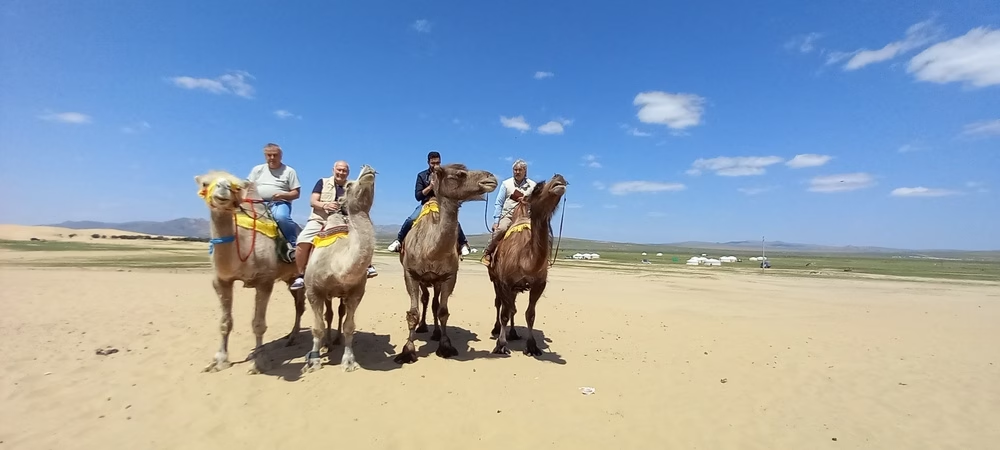Long before the modern map divided nations, ancient spiritual practices led by shamans thrived across the vast Eurasian steppes. These traditions, deeply connected with unseen spiritual realms, have left lasting impressions in rituals, symbols, and monumental stones. A recent Bulgarian expedition to Mongolia has uncovered fascinating evidence tying the pagan origins of the Bulgars to the rich shamanic traditions of Central Asia—where ancestral voices and divine spirits still resonate in sacred mountains and historic sites.
A groundbreaking Bulgarian scientific team ventured into the Sayano-Altai mountain region of Mongolia, seeking to trace Bulgaria’s cultural and spiritual beginnings. Led by esteemed archaeologist Prof. Nikolay Ovcharov and Mladen Stanev, head of the Association of Bulgarians Worldwide, the mission aimed to explore the influence of shamanic beliefs and cultural exchanges between ancient Central Asian civilizations and the pagan Bulgars of the 7th to 9th centuries AD.
Rethinking the Origins of the Ancient Bulgars
While earlier studies often placed the Bulgars’ roots within Turkic-Altaic or Iranian spheres, current research paints a more intricate picture. “The ancient Bulgars were likely shaped by a diverse mixture of peoples and traditions from Central Asia,” said Prof. Ovcharov during a recent press event in Sofia.
Cultural links include the use of Turkic runic scripts, worship of deities such as Tangra and Umai, and shamanic imagery found in Bulgaria’s earliest capitals like Pliska and Preslav. These elements highlight deep spiritual and cultural ties connecting the Bulgars with steppe societies of Central Asia.
Discovering Mongolia’s Sacred Places
Covering over 5,000 kilometers in two weeks, the expedition journeyed through Mongolia’s rugged landscapes, including Ulan Bator, the historic Mongol capital Karakorum, and the former capital of the Uyghur Khaganate. Researchers studied revered sites like the Orkhon Valley and the Turkic shrines dedicated to Bilge Khan and Kul Tigin—leaders celebrated in both Mongolian and Turkic histories.
One remarkable discovery was the “deer stones,” ancient megaliths dating back more than 3,000 years, adorned with stylized deer believed to represent divine beings. These stones bear symbolic resemblance to motifs found in early Bulgarian art.

A Rare Encounter With a Living Shaman
One of the expedition’s most memorable moments came in the remote Khuvsgul mountains, where the team met Baldorj, one of Mongolia’s last living shamans, aged 85. During a rare “kamlayane” ritual, Baldorj called upon 13 spiritual entities known as ongons, believed to travel the vast Eurasian steppes from the Urals to the Pacific. This ritual provided valuable insight into ancient spiritual practices, helping scholars reconstruct ceremonies that might have been performed in pagan Bulgaria over a thousand years ago.
Future Plans: Reviving Shamanic Rituals to Boost Cultural Tourism
Prof. Ovcharov now proposes staging authentic shamanic ceremonies at Bulgaria’s key archaeological sites, such as Madara, Varna, and the ancient Thracian city Perperikon. In a recent interview, he emphasized that these rituals would not only deepen scientific understanding of Bulgar spirituality but also significantly enhance cultural tourism.
He envisions live performances by Mongolian shamans breathing life into ancient sites, transforming them into immersive educational experiences. Plans are underway to pilot these rituals as early as next spring.
Honoring Cyril and Methodius in Mongolia
In a symbolic cultural gesture, Ovcharov announced plans to erect a monument in Ulan Bator dedicated to Saints Cyril and Methodius, the Byzantine scholars who created the original Cyrillic alphabet in the 9th century. While Cyrillic has been Mongolia’s official script since 1945, traditional Mongolian writing is still taught and experiencing a revival.
Cover Image Credit: Bulgarian archeologist Prof. Nikolay Ovcharov. News.mn





